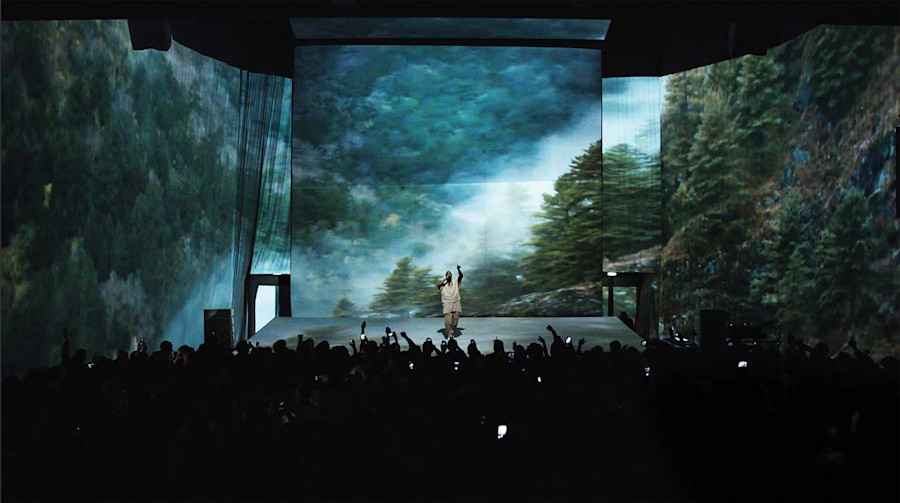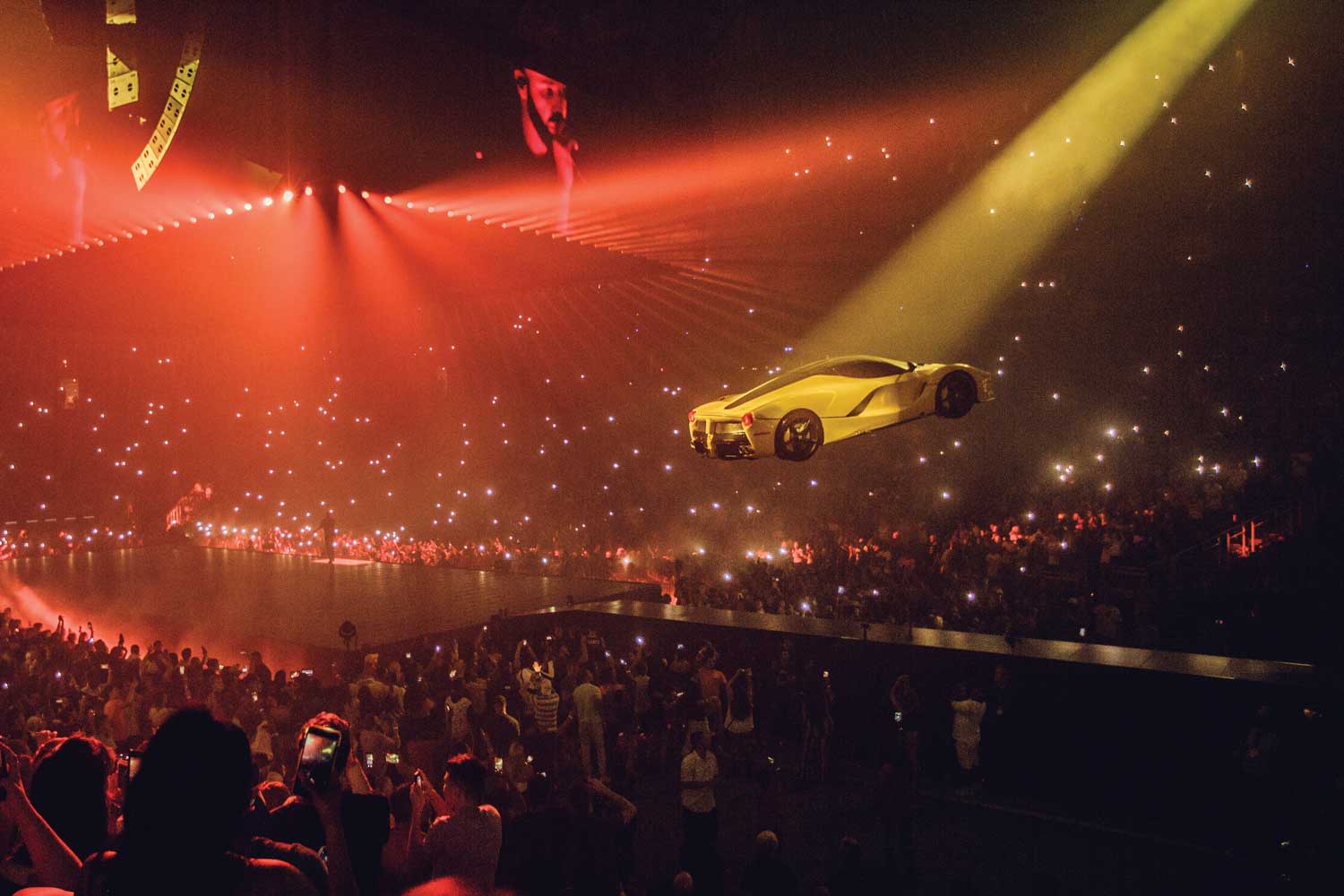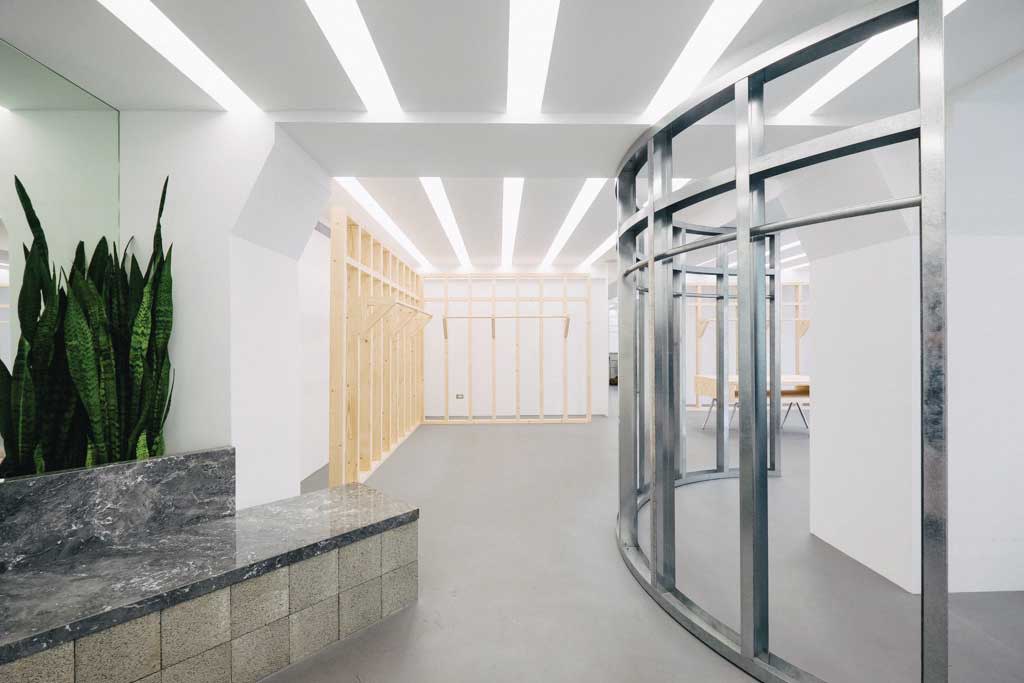In conversation: Willo Perron and Brian Roettinger

Known for pioneering new methods of creative thinking, Perron and Roettinger have collaborated with Jay Z, Rihanna, Kanye West, Drake, Tame Impala, Migos, Frank Ocean, The XX, and Lady Gaga.

Perron—Roettinger, formerly Willo Perron & Associates, is a multi-disciplinary studio specialising in live events, print design, interior space and holistic campaign strategies run by Willo Perron and Brian Roettinger.
Hi all!
Willo Perron: Hey Chris
What have you guys been up to?
Brian Roettinger: I just got back from eating a sandwich.
Neat.
Brian: Yep, a nice banh-mi. That's the latest.
I'm interested to hear, in your words, what WP&A is at this point in time.
Willo Perron: There are two stories that converged just over two years ago. I’ll tell you my side of it and Brian can tell you his.
I was unintentionally doing what people would call 'multi- disciplinary' work, which was really just me doing things I cared about. I started as a graphic designer then did a lot of clothing and footwear design, and then interiors which led to live shows and creative direction for artists.
I met Brian while working on the 'holistic’ view of a particular artist. We had friends in common and I always admired his work not knowing it was his, so we started working on things together. The first project we ever worked on was the Jay-Z album cover for Magna Carta which was myself, Brian and [photographer] Ari Marcopoulos. And then we just kept on working together. When I decided to grow my office (or make it less about me as a one man show) we started talking about joining forces.
Brian Roettinger: While Willo had WP&A I had my own studio that was myself and a couple of other designers, depending on the amount of work there was. It had been like that for about eight years or so.
The work ranged from print-based ephemera for cultural institutions to a lot of music related stuff. But the music was mostly for indie bands, and 95% of the time it was just album packaging. Apparel was occasionally jumbled between those two worlds. I suppose Willo had seen some earlier projects while I was still juggling art and music, so we combined forces which is how it is today.
Willo: From that upside down Y-in-the-road to now, I’ve jumped deeper into the interior space as well as architecture and furniture, and Brian has gone into the live event space and holistic creative for artists. But we use the different departments of the office as our working tools. We’re not really limited to anything. We have specialties, Brian really runs the art department — conventional graphic design, branding, packaging etc. And I’m a little more on top of the live and interiors space, but we cross paths all the time.
Brian: The beauty of that is seeing a printed logo that is one inch tall, and then going downstairs and seeing a logo that’s going to be 60 feet in the air. Your brain is looking through a microscope and a telescope at the same time. There’s a beauty to the micro/macro of projects in that way.
Brian I read in another interview that you had an appreciation for Factory Records and how they catalogued every record, every piece of design and every event as one small part of the overall output of the record. Can you apply the same thinking to WP&A?
Brian Roettinger: Yes and no. The ‘yes’ would be like, does it interest us? Is it a project that’s going to chal- lenge us, or that we’ll find a general interest in who it is for? That’s not to say it’s about fame or scale or money — it could be the smallest project and be the best thing ever. The through-line is that there is almost always a narrative, a story or a reason to everything and it’s never just decoration. And I’m excited by the prospect of doing things that we’ve never done...
Willo: ...And immersing ourselves in worlds we don’t know about. If tomorrow morning a great country musi- cian walked in the door and we had to find out everything there is to know about country music, that would be the best day of my life. The furthest thing away from the last project I did is the best. It’s about throwing yourself in the deep-end. You have to totally immerse yourself in a way where you respect the artists and the fans and the audience, going so deep in the material that you’re giving it back to the people and creating something they find exciting. That’s my favourite part of my job.
Brian: I think it's also nice to look at a body of work and have such varying degrees of ideas and tastes and styles and ingredients.
Willo: Yeah, if you look at a lot of great successful artists, their practice is all over the place. They tried a bunch of different things before they got into their ‘marquee’ thing. Baldessari made film and video and weird conceptual shit until he became the dots-on-people’s-heads guy; Frank Gehry did a bunch of big conceptual works and giant binoculars before landing on crumpled aluminium buildings. I’d say we’re too young to be in our crumpled aluminium dots-on-people’s-heads phase.

I feel your projects exist in an entirely minimalist or maximalist space; there is very little in the middle of two extremes. Does that come down to the briefs you get or is that just how you prefer to work?
Willo: We don't really get briefs [laughing].
I like perfection. When I go for a meal I love well crafted experiences that are perfect down to the cutlery and the lighting and the sound. Or I’m on the street eating something that might be dubious. I don’t understand the middle. The middle is misery to me.
Brian: In a technical sense there is like high-tech, low-tech and no-tech. It's nice if something is super high- tech and it works in a very practical way, or is like no-tech and it's analog and dumbed down and clever. Even when it comes to printing, I like things that are really well printed, very meticulous, nice paper, they pay attention to every little detail in the material. Or it can be from the shittiest Xerox machine that you could find because it’s not meant to be high-tech. It’s really crappy but there is a beauty to it.
Willo Perron: There is soul to shitty stuff. And you can look at society in the same way. All the soul and grit comes from poverty. There is soul to the taco truck. It reacts to its environment and is just so sincere. But then you also need the patrons and the art galleries and the museums for both of those to exist together.
"The middle is misery to me."
Willo Perron
Willo, there was something you said in another interview that I found really interesting, in that you would change your identity or personality depending on who you were collaborating with at the time. Considering many of the artists you’re working with have such a defined vision for themselves, how do you protect your own identity in the process?
Willo: I don’t think it’s about identity. It’s more like a heightened sensitivity. For example, when you’re working with someone like Florence Welch you assume a sort of wounded sensitivity because she wears all her emotions on her sleeve. If you’re working with Drake that’s a different sensitivity with a lot of bravado, and a lot of boasting. There is an enjoyment and indulgence in that, but there are different layers of indulgence: emotional indulgence, conventional indulgence, but also a heightened empathy in trying to understand what a person is feeling and why they’re feeling it.
Brian: It's more about the way you think about what an end product needs to be. You have to be a chameleon. Working with someone like Kesha then immediately switching gears into Jay-Z, the way you design and communicate their vision is going to be entirely different. So it’s more about the way that you think aesthetically and emotionally as to what will work.

Are you ever concerned that your ambition may overshadow an artist's vision, or that their vision might be incongruent with your design?
Willo: I try and get out of the way. If you didn’t know that my work was my work you would have no idea it’s the same person doing it. There is no through-line or things that are ‘very me’. For me, the difference between the artist and the designer is that I am solving an end-result, and making the musician or brand or space feel more like that person. You’re making a better version of the information they’ve given to you, or from what you’ve picked up by listening. A big part of our job is research and studying and being able to perceive the visual interpretation as an end-result. There is a whole generation of designers that really want to get their vision into things. I’m the total opposite.
Brian: My biggest fear at one point was being in a world where you’re hired for one flavour only. With some artists you know it’s theirs; it’s about them and it’s about their name. It’s like a mixtape with only one song on it and it makes you feel the same every time. Our approach is almost the opposite. I like to explore how things can feel differently, speak differently or communicate in a different way.
The theme of this book is Restlessness, which means different things and has different outcomes for different people. Working so close to pop-culture and artists you might personally enjoy, are you able to compartmentalise work and your life outside of it?
Willo: What's work? For me there’s no off switch. It’s not like I work all the fucking time but everything is like... ‘oh that’s cool’. Our office is an extension of our passions: architecture, graphics, packaging, performance, and what- ever else. A lot of the furniture we try and build winds up into my house as an extension of our interior work.
It never makes sense to people because we’re like ‘oh yeah we do three or four different things that are kind of successful, and we kind of work with each other’. Explaining that to people ten years ago was like ‘what the fuck are you doing? Just focus! Why are you so unfocused?’ But it’s not always about focus.
"Your brain is looking through a microscrope and a telescope at the same time."
Brian Roettinger
Do you think there will ever be a point in the future where you look around, and everything has gotten too big and out of control?
Brian: I don’t think it’s about how big or how far something goes, it’s more like how interesting and challenging it is.
Willo: I’m curious, what is ‘big’ to you?
Arena shows, stadium-sized catwalks, floating cars... Everyone is trying to one-up themselves, and I wonder if there is a limit that can be reached.
Willo: We could design the Olympic Games opening ceremony.
Brian: Or we could design the U.S one dollar bill. That’s big.
There’s certainly no fear of scale in our work.